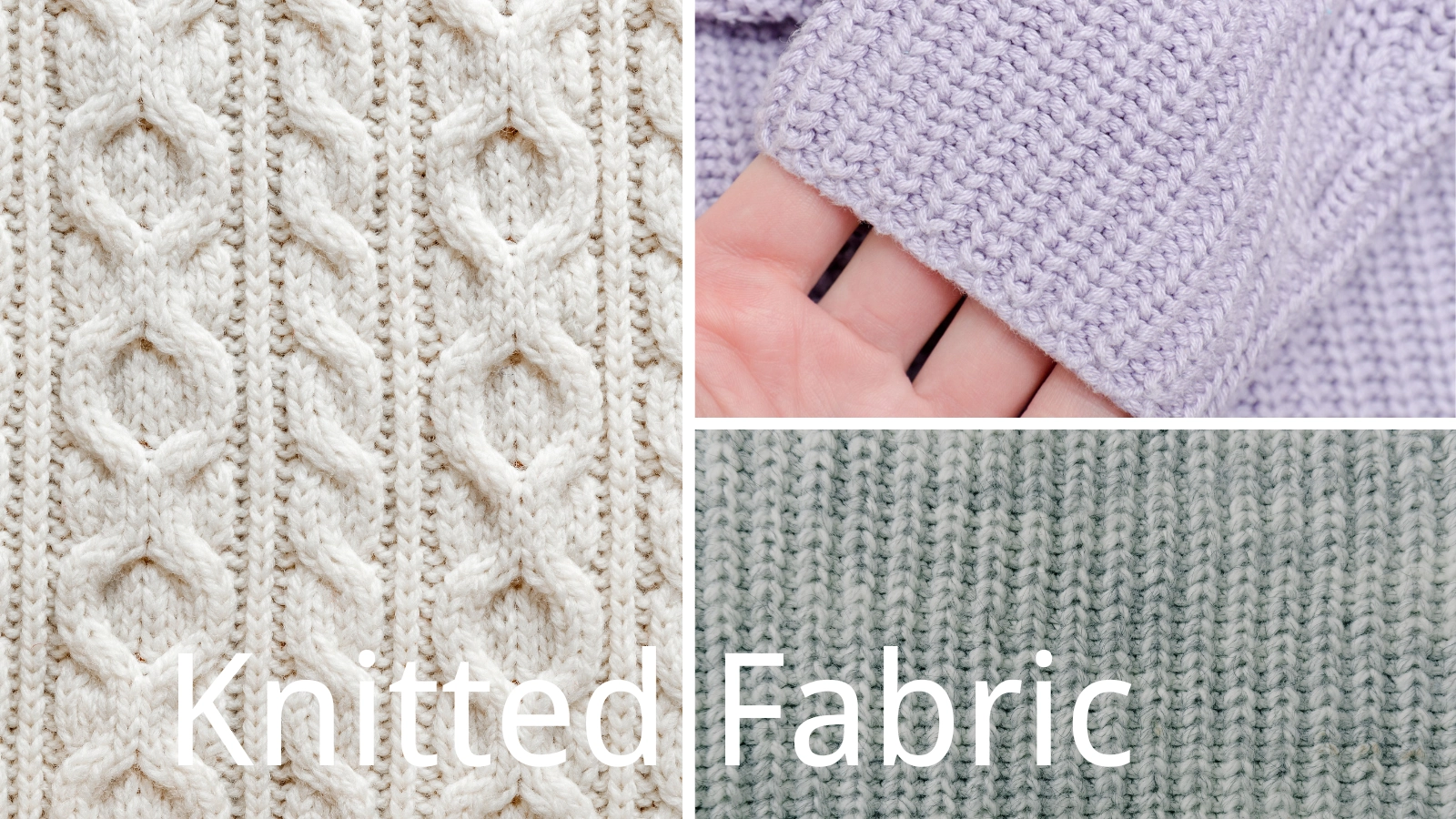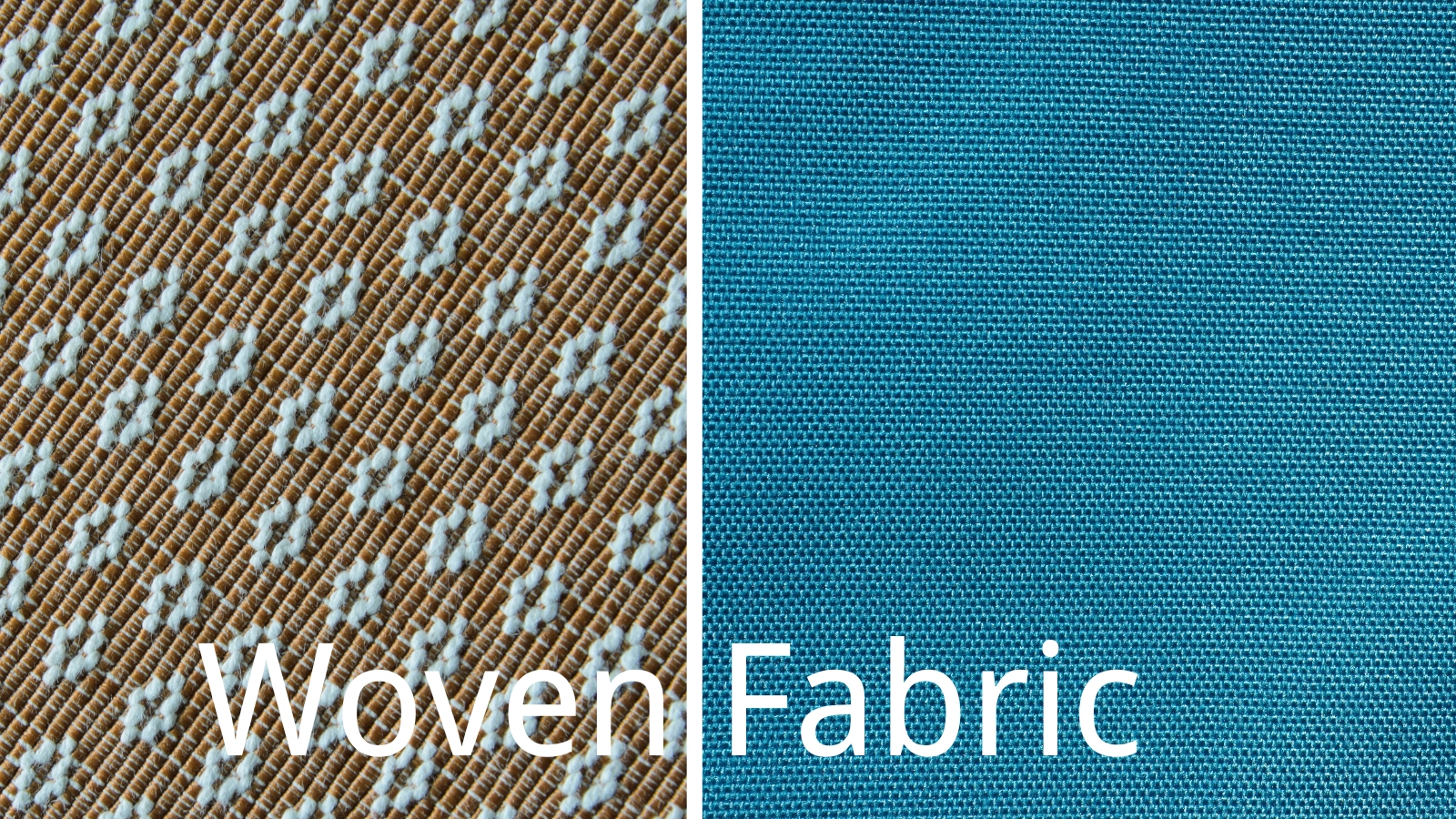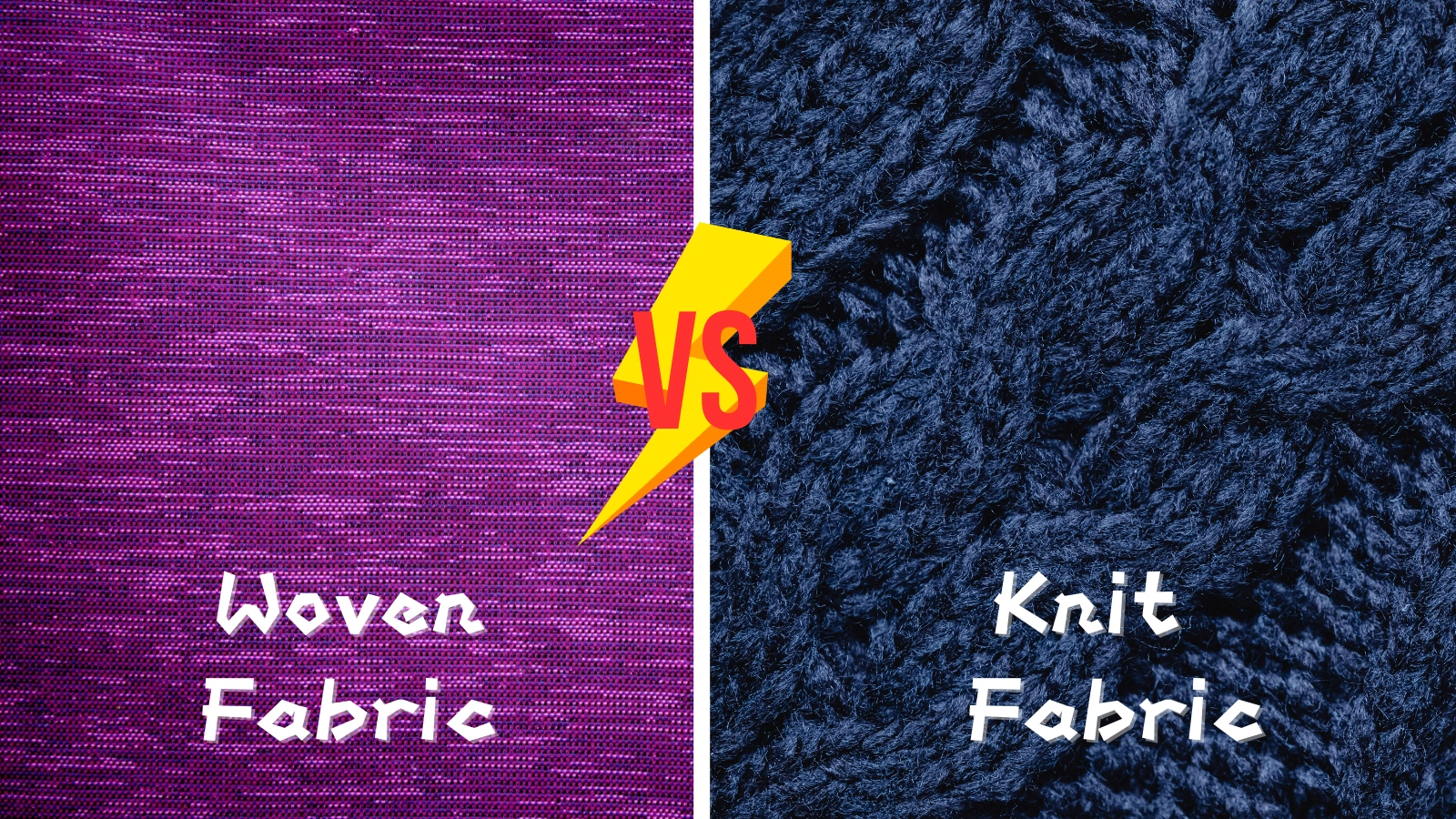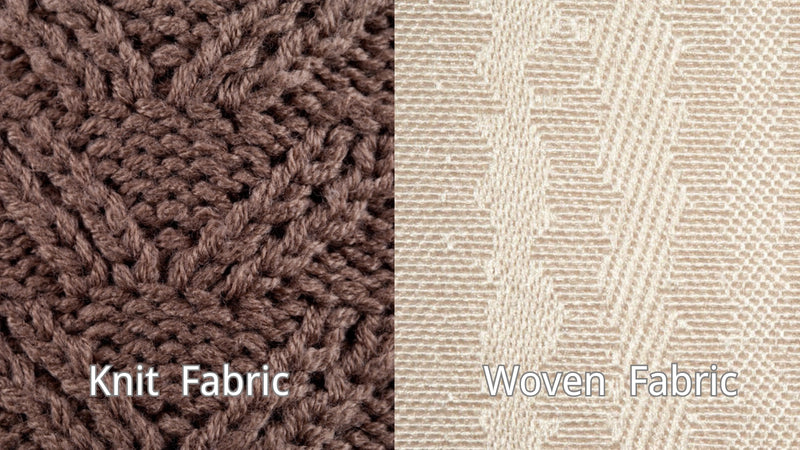Both woven fabrics and knit fabrics are staples in your wardrobe. But you may not have recognized their distinct structural differences. These two basic textile methods create materials with different properties. These include stretch percentage, tensile strength, and dimensional stability.
Understanding fabric details helps you make better garment choices. It also enhances how you evaluate textile performance for everyday wear and specialized needs.
Key Takeaways
- Knits are made from continuous yarn loops with 20-25% stretch. Wovens are created by interlacing perpendicular yarns with minimal stretch.
- Knit fabrics naturally resist wrinkles and provide comfort. Woven fabrics offer superior durability and structure.
- Knitted edges curl without fraying. But woven edges fray and need finishing to prevent unraveling.
- Knits excel in activewear and casual clothing. Wovens are perfect for formal wear and structured clothes.
- Knit fabrics need special stretch stitches during sewing. But woven fabrics can use standard sewing techniques.
What Are Knit Fabrics?

Let’s begin by taking a closer look at the unique characteristics of knit fabrics.
History and Origins of Knit Fabrics
Knitting began in Europe and the Middle East around the 5th century AD. It involves forming interconnected loops from continuous yarn.
Initial knitting techniques primarily used wool fibers. This was due to their exceptional workability and widespread availability. During the Middle Ages, hand knitting evolved into an essential domestic craft. It produced the necessary clothes for thermal regulation.
The Industrial Revolution marked a pivotal transformation in knit fabric production. The introduction of mechanical knitting machines revolutionized manufacturing efficiency. These machines enabled the mass production of items like sweaters and hosiery.
Common Types of Knit Fabrics
Knit fabrics emerge from interlocking yarn loops to create distinct structural variations. You'll find several types of fabric that serve specific functions:
- Jersey Knit: Lightweight, single-knit fabric with a smooth surface on one side and a slightly textured surface on the other.
- Rib Knit: Vertical ridges (ribs) on both sides, made by alternating knit and purl stitches; very stretchy.
- Double Knit: Two layers of fabric knitted together, making it thicker and reversible with no wrong side.
- French Terry: Loops on one side and a smooth surface on the other; soft and absorbent.
- Fleece Knit: Brushed on one or both sides to create a soft, fuzzy texture that traps warmth.
Applications of Knit Fabrics
Knit fabrics dominate activewear applications. This is due to their superior stretchability and moisture management properties. Jersey knit has a smooth surface and breathable construction. This makes it perfect for t-shirts and form-fitting garments.
For thermal regulation, fleece knit delivers excellent insulation in outerwear and sleepwear.
In modern fashion, knit fabrics excel in seamless construction techniques. They let you make clothes that move with the body without tight fasteners.
Their adaptability makes them indispensable in contemporary wardrobes.
Pros and Cons of Knit Fabrics
Pros:
The primary benefits of knit fabrics include superior stretch capacity. They allow 25-40% more flexibility than woven fabrics. They're inherently wrinkle-resistant and offer exceptional comfort through their soft, pliable texture.
Maintenance is straightforward, with machine-washable properties and rapid drying times.
Cons:
However, knit fabrics typically exhibit reduced durability compared to woven counterparts. They're prone to pilling after repeated wear. They may even experience permanent stretching, particularly in high-stress areas.
Their relaxed structure makes them less suitable for formal applications.
What Are Woven Fabrics?

With knit fabrics covered, it's time to dive into woven fabrics and their unique features.
History and Origins of Woven Fabrics
The art of weaving emerged as one of the most significant textile innovations. It dates back approximately 100,000 years.
You'll find evidence of woven fabrics in ancient societies around 5000 BC. Artisans developed sophisticated methods of interlacing yarns to create woven textiles.
The plain weave technique showed remarkable engineering through its perpendicular warp and weft construction.
This durable structure revolutionized clothing production. It led to the development of various weave patterns.
Types of Woven Fabrics
Modern textile manufacturing has refined the production of woven fabrics. You'll find three primary weave patterns in fabric manufacturing:
- Plain weave interlaces warp threads and weft threads in a simple over-under pattern. It creates durable fabrics like poplin and muslin. It's perfect for everyday clothes.
- Twill weave produces diagonal lines through offset yarn patterns. This results in sturdy materials like denim. Twill is excellent for heavy-duty applications.
- Satin weave features longer floating yarns that create a smooth, lustrous surface. It's suitable for formal attire.
Applications of Woven Fabrics
Woven fabrics are extensively used in structured clothes like blazers and formal shirts. Their robust construction makes them ideal for upholstery and home décor.
Additionally, their wear-resistant properties suit casual wear applications like denim and workwear.
You can enhance them for technical uses by adding water resistance and flame retardant treatments.
Their adaptability to different finishes and textures makes them essential for fashion accessories, outdoor gear, and durable functional items.
Advantages and Disadvantages of Woven Fabrics
Advantages:
Woven materials are exceptionally durable. This makes them ideal for clothes that need structural integrity and long-term wear resistance. Their dimensional stability means they won't stretch out of shape like knits do.
Disadvantages:
However, woven fabrics are prone to wrinkling. They need extra maintenance through regular ironing. The complex manufacturing process also leads to higher production costs. They're also less suitable for casual, stretch-dependent applications. This is due to their limited flexibility and higher maintenance needs.
Knit Vs Woven: Key Similarities and Differences

After learning about the two fabrics, let’s look at how they compare. It's important to understand the differences between knit and woven fabrics.
Key Similarities Between Woven and Knit Fabrics
The two fabrics share fundamental similarities. These similarities make them versatile options in fabric manufacturing.
Both fabric types are adaptable to various fiber compositions. They work well with natural cotton and synthetic polyester.
Their key differences in construction affect stretchiness. But both serve as common fabric choices in layered garments. They can undergo machine washing with proper care.
Both fabrics respond well to different sewing techniques. But you'll need to adjust your approach based on their unique properties.
These fabrics, whether woven or knitted, are versatile for clothing and home furnishings.
Key Differences Between Woven and Knit Fabrics
Knit and woven fabrics create distinctly different characteristics in their performance and application. Here’s a simple breakdown of their key differences:
| Aspect | Knit Fabric | Woven Fabric |
|---|---|---|
| Structure | Made by interlooping yarns. | Made by interlacing threads at right angles. |
| Stretchability | Naturally stretchy, especially in all directions. | Limited stretch, unless elastic fibers are added. |
| Texture | Soft and flexible. | Stiffer and more structured. |
| Durability | Can snag or lose shape over time. | More durable and holds its shape longer. |
| Breathability | Often more breathable due to loops. | May be less breathable, depending on weave type. |
| Weight | Generally lightweight. | Can range from light to heavy, depending on weave. |
| Wrinkle Resistance | More wrinkle-resistant. | Tends to wrinkle more easily. |
| Edge Fraying | Doesn’t fray when cut. | Frays when cut unless edges are finished. |
Knit Vs Woven: How to Identify the Two Fabrics
To identify if a fabric is knit or woven, examine its look and feel carefully:
- Stretch Test: A knit material will stretch easily in various directions. But woven fabrics have a distinct crisscross pattern showing minimal elasticity.
- Wrinkle Test: Crumple the material. Knits recover quickly, while wovens keep creases.
- Fray Test: Cut a small piece of fabric. If the edges fray easily, it’s woven. If the edges don’t fray but may curl slightly, it’s knit.
- Thread Patterns: Examine the thread patterns. Knits display interconnected loops, whereas wovens show perpendicular yarns.
The Environmental Impact of Knit vs Woven Fabrics
Knit materials typically generate less waste during production processes. They use a single yarn construction that minimizes material usage.
Woven fabrics need more intensive manufacturing. They consume greater energy and water resources during weaving and finishing. However, their superior durability often results in longer-lasting garments. This potentially offsets their higher initial environmental impact.
The manufacturing efficiency of knits suggests a lower total resource consumption.
Conclusion
Knit and woven fabrics differ considerably in their structural composition, performance metrics, and end-use applications.
Knits show 25-40% greater elasticity and 15% higher moisture-wicking capabilities. Conversely, wovens exhibit 30% enhanced tensile strength across the grain.
To match your textile needs, choose fabrics based on their density (g/m²), fiber content percentages, and dimensional stabilityc needs.
Learn more fabric knowledge on the Longan Craft Blog, and dive into the fabric world with Longan Craft!
FAQs
Which Is Better Knit or Woven?
Neither is universally superior, as each excels in specific applications. Knit's elasticity optimizes comfort and movement (15-25% stretch). Conversely, woven's structural integrity provides 2-3x greater tensile strength for formal wear.
Are T-shirts Knit or Woven?
Your T-shirts are mainly made from jersey knits with 15-25% stretch. The interlocking loop structure provides ideal flexibility and breathability. These are ideal for your everyday casual wear needs.
Which Is Warmer, Knitted or Woven?
Knitted fabrics provide superior warmth. This is due to their loop-structured construction, which creates more insulating air pockets. They usually keep heat better than woven materials of similar weight.


0 comments